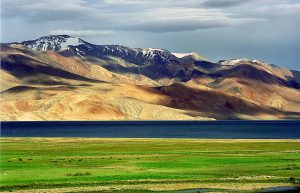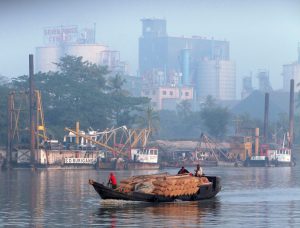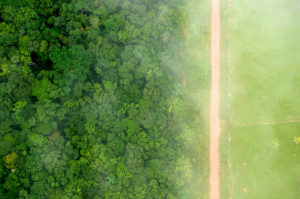Glacier lake outburst floods (GLOFs) have been responsible for some of the greatest damage in the Himalayan region in the last few years. Bhutan, a country consisting solely of mountain valleys, is particularly vulnerable. A GLOF in Bhutan occurred on June 28, 2015 and emptied Lemthang Tsho (lake), the source of the Mochu river
The GLOF caused by the partial breach of Luggye Tsho on October 7, 1994 is recorded as the most catastrophic event in recent history of Bhutan, both in terms of its magnitude and the loss of life, property, and infrastructure downstream. Records show that the GLOF killed 20 people, livestock, and damaged several houses, watermills, and pasture lands along its path. The event prompted the Royal Government of Bhutan to commission several research activities on glaciers and glacial lakes. The Punatsangchu hydropower project – Bhutan’s largest dam downstream along the same river was also at risk.
![Before Lemthang Tsho GLOF in May 2015 [image by Sebastian Kammer]](/wp-content/uploads/2016/03/Before_Lemthang-Tsho-GLOF_May-2015-by-Sebastian-Kammer.jpg)
![After Lemthang Tsho GLOF, July 2015 [image by Sharad Joshi/ICIMOD]](/wp-content/uploads/2016/03/After_LemthangTsho-GLOF_July-2015_by-Sharad-Joshi_ICIMOD.jpg)
Read: Nepal’s Seti flood victims still live in fear
Read: Uttarakhand floods a “man-made disaster
Read: Learning to live with flash floods
The survey team met residents in Thanza, Tenchi, Lhedi, Shangsa and Tshojo villages, within the Lunana watershed, located very close to the glacial lake outlets. More than a hundred households live close to the glacial lake outlets within the Lunana watershed. GLOFs are the primary risks to the settlements along the rivers. Researchers aimed to learn more on how the community perceived GLOFs and climate change, their capacity to handle potential disasters, and their plans to reduce their risks and losses in the future.
Recent studies in the Himalayas in Bhutan have all showed evidence of glacier retreat. There are 25 glacial lakes identified as potentially dangerous, Thorthormi Lake being considered the most dangerous one.
“Climate warming is the driving force behind glacier retreat and the formation of glacial lakes or expansion of those lakes, thereby accelerating potential extensive downstream damage and loss of life due to GLOFs. It has become imperative to locate and map these lakes, to identify critical ones among them, and to understand hazards associated with them and mitigate or minimize the risks,” said Pradeep Mool, Programme Coordinator of ICIMOD’s Cryosphere Initiative. He said the Cryosphere Monitoring Programme in Bhutan will also address this issue as a part of a comprehensive monitoring programme.
![<p>A river profile through water depth and sediment measurements of the Raphstreng Lake [image by Tshering Penjore/Department of Geology and Mines]</p>](https://dialogue.earth/content/uploads/2016/03/A-river-profile-through-water-depth-and-sediment-measurements-of-the-Raphstreng-Lake-by-Tshering-Penjore_Department-of-Geology-and-Mines.jpg)







